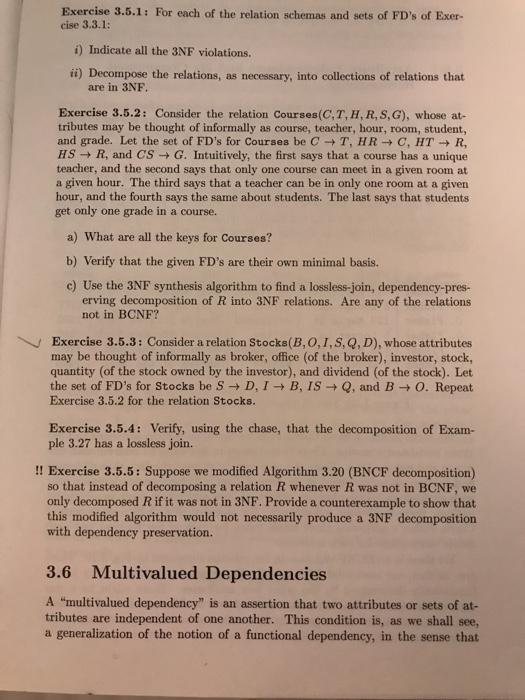Answered step by step
Verified Expert Solution
Question
1 Approved Answer
Exercise 3.5.1: For each of the relation schemas and sets of FD's of Exer- cise 3.3.1 i) Indicate all the 3NF violations. ii) Decompose the

Step by Step Solution
There are 3 Steps involved in it
Step: 1

Get Instant Access to Expert-Tailored Solutions
See step-by-step solutions with expert insights and AI powered tools for academic success
Step: 2

Step: 3

Ace Your Homework with AI
Get the answers you need in no time with our AI-driven, step-by-step assistance
Get Started


